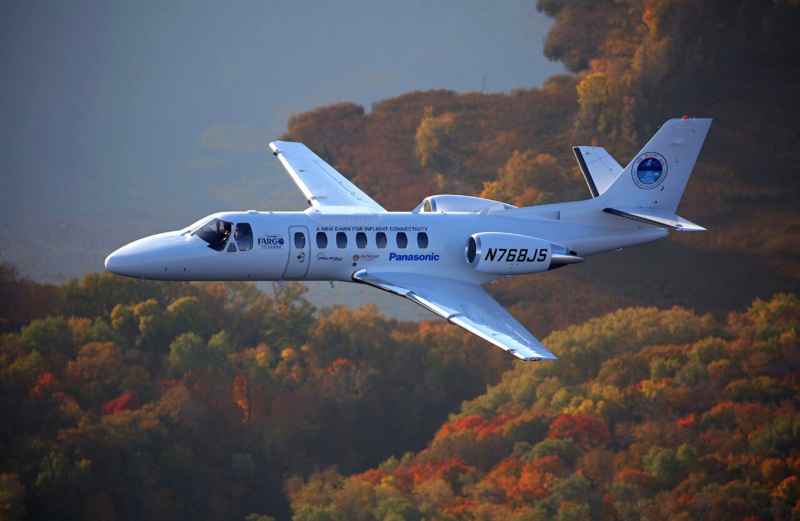Panasonic Avionics Corporation (Panasonic Avionics), has announced the successful optimization of its multi-orbit satellite network following switching between LEO (Low-Earth Orbit) and GEO (GeoSationary Orbit) networks in its flight test program.
The successful switching represents a major milestone in Panasonic Avionics’ flight test program, validating the success of its multi-orbit network, allowing switching between multiple networks whilst in flight.
Testing conducted over the Arctic reinforced the strength of LEO coverage over the poles and validated the performance of the network and terminals under extreme environmental conditions. Equatorial testing also demonstrated that Panasonic Avionics’ LEO service could operate seamlessly without interfering with GEO satellites.
The test program also demonstrated the comprehensive global coverage offered by Panasonic Avionics multi-orbit network, with capacity available everywhere from remote areas to densely populated ones. This is built on an enterprise-grade LEO network from Eutelsat OneWeb with plentiful bandwidth capacity for aviation and a layered GEO network that has been built over several years and can place additional capacity wherever airlines need it most.
During the flight test program, a range of different passenger connectivity scenarios were used to validate the strength and performance of Panasonic Avionics’ multi-orbit network, led by the low latency benefit of LEO connectivity. These included social media channels and media-rich websites which were highly responsive with loading times similar to what passengers experience in their homes. Tests also included video streaming, with a near-instant playback of 4K online content, as well as enterprise collaboration tools that feature video conferencing.
Antenna and network performance checks were also carried out, showing impressive speeds and demonstrating the consistent low latency performance of LEO connectivity. Forward link speeds were up to 193 Mbps and return link speeds were 36 Mbps.
In Quotes
John Wade, Vice President of Connectivity at Panasonic Avionics, said:
“The successful optimization of our multi-orbit network is a major milestone and one which demonstrates its readiness for commercial use. Working in close collaboration with our LEO provider Eutelsat OneWeb, our GEO satellite operators, and our antenna supplier SBS, we are focused on taking in-flight connectivity to new heights, and we are excited to see how the impact of our multi-orbit network helps shape the future of our sector.”
Multi-Orbit – a way forward
Economy Class and Beyond last year covered the rise of LEO Networks and how Multi-Orbit Systems will be important for you to have wifi connectivity in flight. Our brief is here.
It seems that companies are taking those steps forward to realise the Mulit-Orbit System concept and turn it don’t a commercial reality, ready to fly.
And for those travellers in the air, it will be constant connectivity, all of the time.
For those travellers who need and demand that level of connectivity, it’s going to be an exciting time when these launch with commercial customers.
Welcome to Economy Class and Beyond. Your no-nonsense guide to network news, honest reviews, in-depth coverage, unique research, as well as the humour and madness I only know how to deliver.
Our Social Media pool has expanded. You can find us across most networks as @economybeyond on BlueSky, Threads, Mastodon and Instagram!
Also, remember that we are part of the BoardingArea community, bringing you the latest frequent flyer news from around the world.
